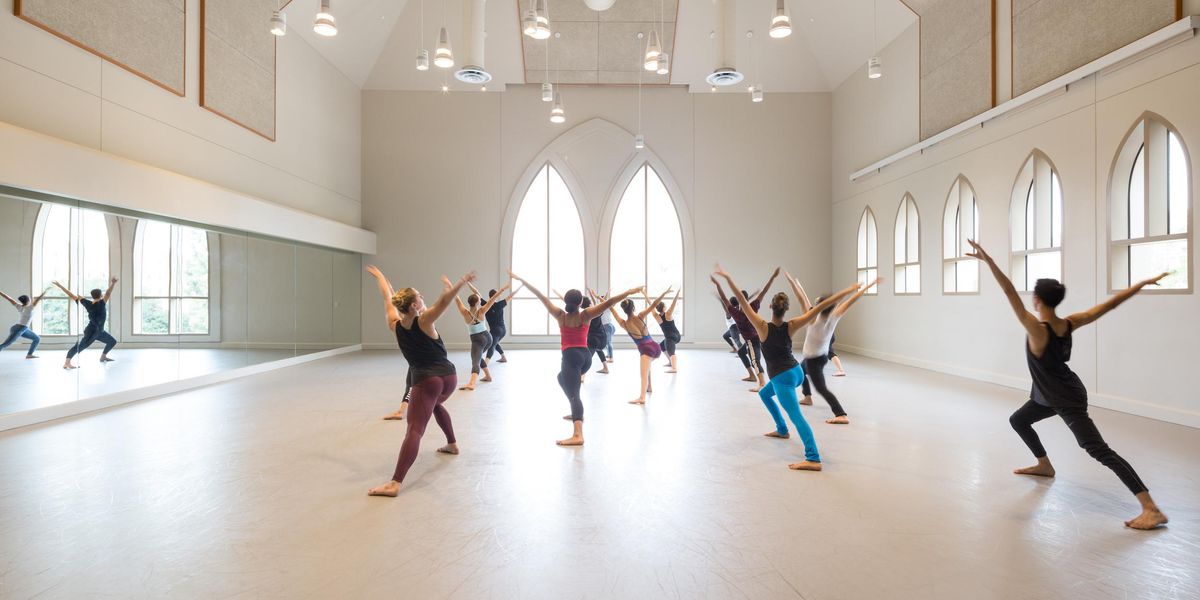Time Out
Aaron Canfield’s break led him to his dream company: Momix. Photo by Eddy Fernandez, courtesy Momix.
Aaron Canfield knew something was wrong halfway through his second season as a trainee with Richmond Ballet. “I began to not care for dance at all. I wouldn’t give it my all in class, which was strange because dance had always been my life,” he remembers. The demands of dancing full-time and working early mornings and weekends to make ends meet had taken their toll. Though he didn’t blame RB for his situation, Canfield knew he was in a rut and realized he had to take a break from the company. He dropped everything, moved back to his hometown of Roanoke, Virginia, and spent the next six months working as a cook for Applebee’s. “Cooking is another major passion, so the job was an escape for me,” he says.
As distressing as it can be, it’s not uncommon for dancers to go through lulls during the times of self-searching that an artistic career requires. Sometimes the best thing you can do is recognize burnout and take time off from dance to restore both your body and mind. “A healthy mind should be a priority in this field,” says artistic director and choreographer Sidra Bell. “One may find that taking time off will bring them back to dance with more intentionality and purpose.” With patience, mindfulness and reflection, taking a break could help you to return to your career stronger.
How to Have a Hard Talk
Once you’ve chosen to take time off, reach out to your director. Bell tries to keep an open dialogue with her dancers about their work in the company. However, like most companies, she also has more formal checkpoints throughout the season. If your company has annual or biannual meetings with artistic staff, that can be the best time to start a conversation about a break. If that’s not possible, request a meeting at the artistic staff’s convenience. For Bell, “a creative relationship is about mutual ideas and desires. It’s important to keep good relationships.” To that end, it is always best to approach the conversation with respect. While you can’t expect most directors to hold a spot for you or agree in advance to hiring you again later, taking a gracious tone can help you maintain a professional reputation.
Spend the Time Wisely
The benefits of taking a break depend on how well you use it. Even if you’re skipping out on ballet class, Dr. Kate Hays, sport psychologist and director of The Performing Edge in Toronto, recommends taking good care of your body. Do Pilates or yoga and cardio training, get sleep and proper nutrition and don’t smoke or do substances.
It’s an opportune time to expand your horizons. “If you’ve been a dancer your entire life and it has been your whole identity, begin exploring who else you are,” says Hays. For Canfield, working in a kitchen was both a respite from the studio and a window into how one of his passions could become a future career.
According to Hays, this is also a perfect time to connect with people outside of dance. Expanding your social circle can help you broaden and reevaluate your perspective. You may remember why you loved to dance in the first place and renew your commitment.
Through a colleague, Canfield took a summer job at The Nutmeg Ballet as a guest artist and RA. Once back in the studio, he thoroughly enjoyed taking class and learning choreography. A contact there put him in touch with his dream company, Momix, and after taking a company class, associate director Cynthia Quinn offered him a job. “It was the best thing that ever happened to me. I am now traveling all over the world, doing one job that I love,” says Canfield, whose break led him to a company that suited his style more. “Since the opportunity came that day, I have never given up.”
Quiz: Are You Burnt Out?
According to Dr. Kate Hays, director of the Performing Edge in Toronto, signs of burnout are not too different from those of overtraining. Symptoms include chronic exhaustion, increased irritability, decreased effectiveness, depression, and/or changes in eating or sleeping patterns. She recommends asking yourself the following questions to decide if your symptoms point to a normal cycle of pushing yourself or post-show letdown, or if they are an indicator of a more extreme situation:
- Is this feeling of burnout lasting longer than usual?
- Does the burnout seem unrelated to an injury or an extreme period of work?
- Am I in my late 20s or 30s? And if so, am I wondering if I should continue in this profession?
- Is this feeling of discouragement different than other challenging times in my career?
If the answer to any of these questions is yes, take time to reflect. “Suppose you had a best friend in the same situation: What would you advise her to do?” asks Hays. Consulting a close friend or psychologist can also be helpful when considering a break. – CT




